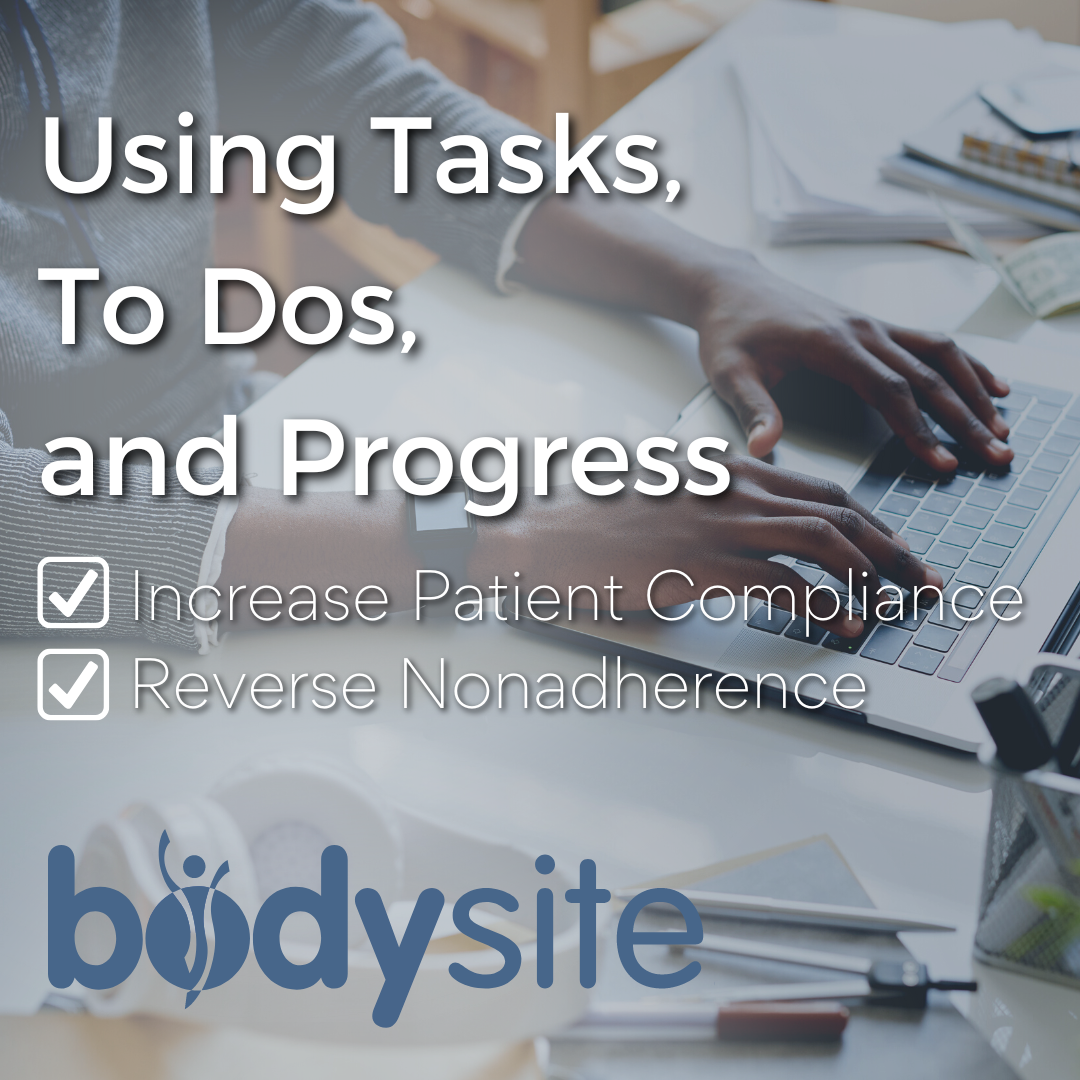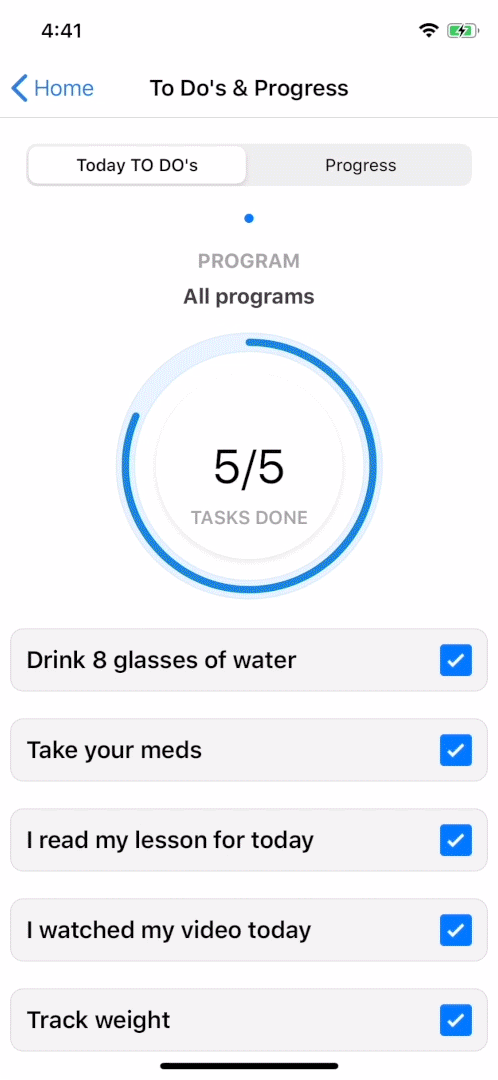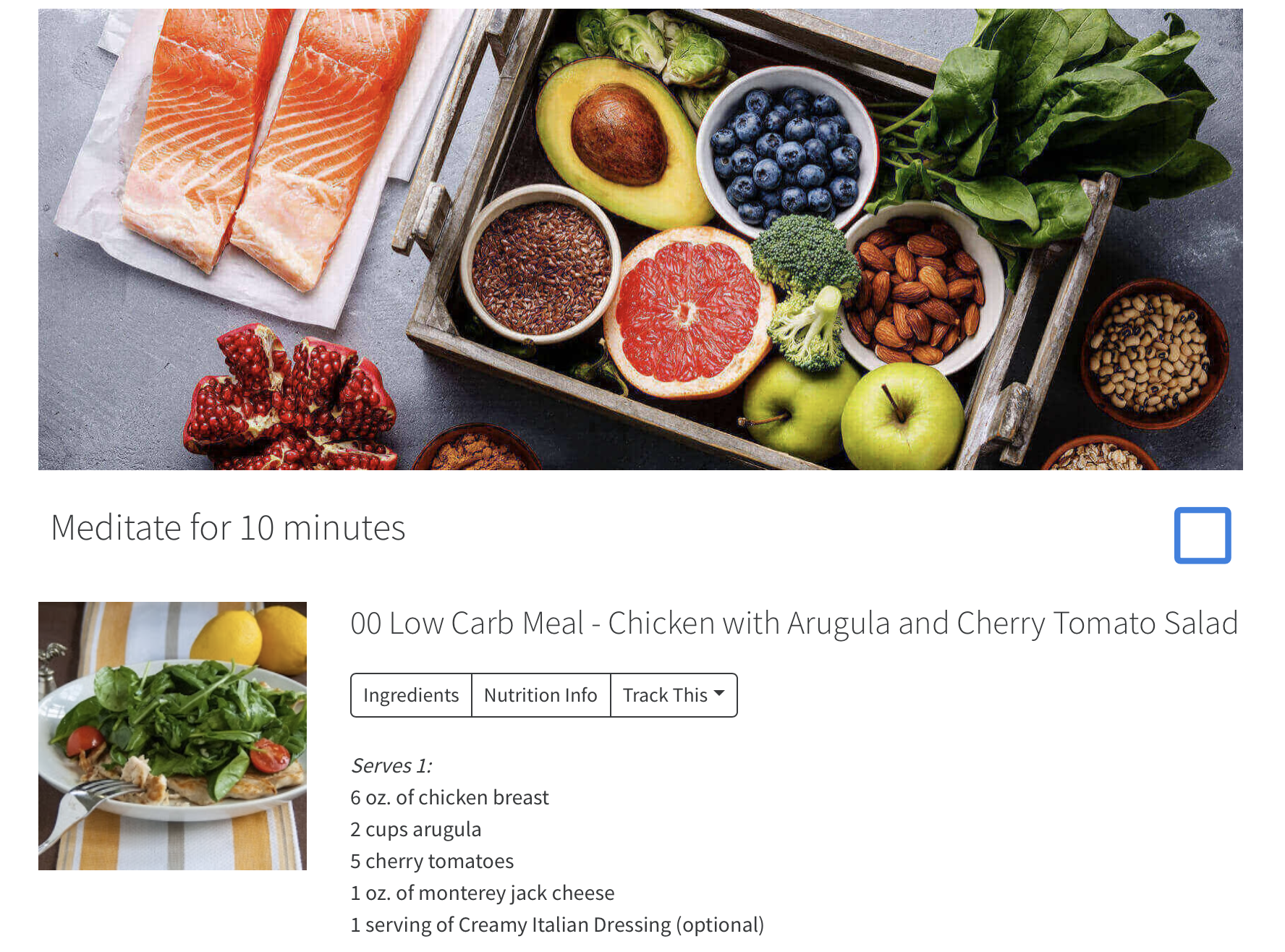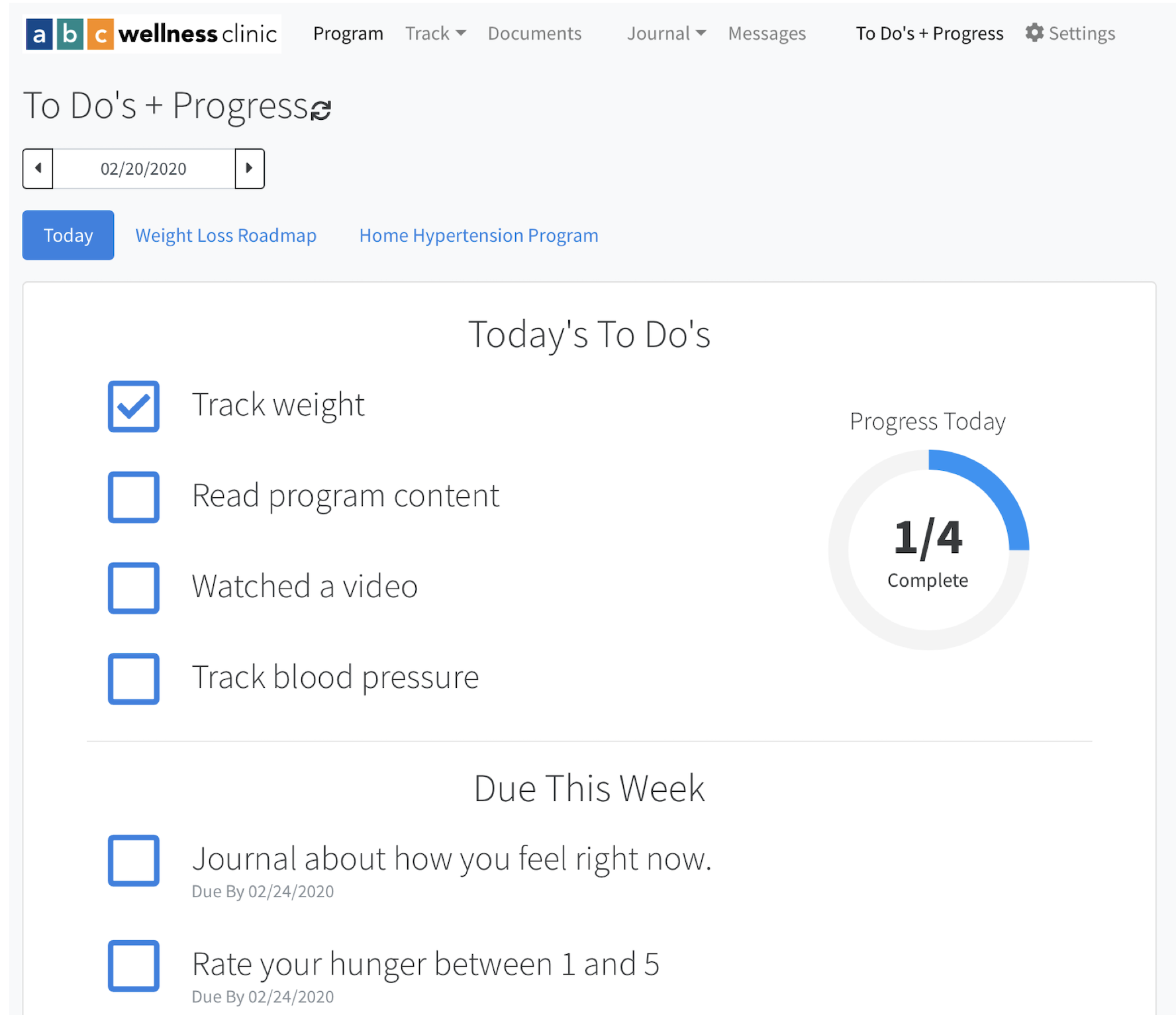Using Tasks, To Dos and Progress to Increase Patient Compliance and Reverse Nonadherence

Do you know what your patients are doing when they leave your office and go home? Are they following your care instructions or immediately going off track?
Most providers and care teams unfortunately have no idea. And worse, most care providers aren’t really giving any actionable advice that encourages the patient to engage and comply. Most of the time, the patient doesn’t know what they’re supposed to do or how to accomplish what’s asked of them. How do you change that?
One way to get patients to follow your advice is to give them advice and then, make it engaging and fun to complete the tasks they need to follow to self-govern.

Compliance and adherence is a major discussion point among health and wellness providers at all levels. Studies have shown that nonadherence can account for up to 50% of treatment failures, about 125,000 deaths, and 10%-25% of hospital admissions each year in the United States.
People who are actively engaged in their health care are more likely to stay healthy and manage their conditions by asking their doctors questions about their care, following treatment plans, eating right, exercising, and receiving health screenings and immunizations. Patients without the skills to manage their health care incur costs up to 21 percent higher than patients who are highly engaged in their care. March 2014 – Robert Wood Johnson Foundation
In Strategies to Enhance Patient Adherence: Making it Simple published on National Center for Biotechnology Information, Medscape General Medicine stated, “patient nonadherence is not limited to medications alone. It can also take many other forms; these include the failure to keep appointments, to follow recommended dietary or other lifestyle changes, and to follow other aspects of treatment or recommended preventive health practices. Hence, the actual implications of nonadherence go far beyond the financial aspect of medication nonadherence, as estimated above” (2005).
Researchers have found that one of the key ways to increase patient compliance is by improving the communication and relationship between physician and patient. Most recently, technology has been acclaimed as a vehicle that can be used to make both of those things happen. Managed Healthcare stated that using smartphone apps, push notifications by email and text, remote monitoring and patient portals can all help to improve patient engagement and compliance.
BodySite has existed for years to do just that—to improve the provider-patient relationship and care provided between visits as well as to enhance results and outcomes for both the provider and the patient. This last year, we re-thought the possibilities of our content creation engine, and launched the web’s most powerful health and wellness content management system called Welle™. You can learn more about that here.
BodySite wanted to do something to help solve the compliance and engagement issue on an even deeper level than ever before! That is how “TASKS” were born. WATCH THE WEBINAR WHERE WE COVERED TASKS LIVE HERE.
Tasks can now be added to your patients’ protocols, care information and programs in order to improve outcomes and increase patient compliance. Using this new feature, you can create tasks for anything that your patient needs to be doing—tracking weight, logging in, journaling, tracking blood pressure, taking a supplement; any custom action you need your patient doing. Whatever you want or need to make a task for… now you can! Once the task is created, you can use our simple click and drop content creation system to add the appropriate tasks into your programs that you use with patients.


Tasks are an innovative and interactive component of your patient’s program and plan. You already knew that patients can watch videos, track recipes, read text and follow your care from the main program page of their patient account. Now with tasks, patients can check off what they’re actually doing and you can monitor their progress in realtime. Tasks are considered “objects” on a program so they are viewable right on your patient’s main program page. Patients can also go to the new “To Dos and Progress” page to get more detail about their tasks and progress on their program or programs.

From a Provider or Staff Account, you will also be able to see your patient’s progress every day and every week of the program. So, for example, if a patient has only completed 2 of 8 tasks for today, that’s exactly what you’ll see inside their patient profile. And, you can use the “See It” option under “What guidance is [Patient Name] following” to see their responses to each task. The tasks are seamlessly integrated with the appropriate tabs as well. So, for example, if a patient marks complete his or her task to track weight, that will also be reported under their “Track Body” section. Or, if they fill out a custom journal prompt task, that will be included in their “Daily Journal” section, and so on.
Using technology and our new “TASKS” feature, we’ve provided a solution to help improve patient outcomes and compliance. By incorporating tasks into your patient’s programs, you’ll help improve the communication between yourself and your patients, making adherence that much easier!
Watch the videos below to learn more and start using “TASKS” today! The first video is the web view, followed by a short overview of the functionality within our native app for iPhone (also available on Android).
If you’re not using the BodySite platform and app to educate, guide, engage and monitor patients between visits, you’re not giving patients the care they deserve and expect. Try this for your practice free, today.
